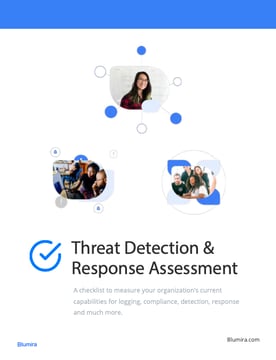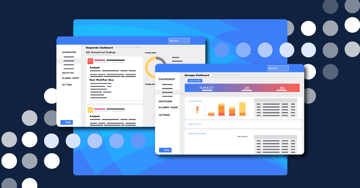You’re all about making life easier for members. We’d like to make life easier for you. If you’re looking for a new cybersecurity solution, you’re going to have to do your due diligence. This isn’t a decision to be taken lightly.
Use this checklist to compare solutions so you can make sure you’re getting member-first, comprehensive cybersecurity coverage that respects your budget.
Credit union compatible
- Members first – Threat detection and response technology should work behind the scenes to safeguard member accounts and information. It should be minimally intrusive to support a member-first service commitment.
- Returning value to members – A cybersecurity solution that’s budget wise provides vigilant protection without the need to hire a team of security experts or outsource to pricey consultants.
- Credit union use cases – Ask if the solution has been successfully deployed in credit unions, banks, and other financial service companies.
- Streamline compliance response – Security plays a prominent role in NCUA exams. Cybersecurity solutions should be evaluated on their ability to demonstrate regulatory compliance and rapid incident response.
- Meets requirements for cyber insurance policies – Many cyber insurance policies require the use of a SIEM or provide lower premiums for organizations that use a robust cybersecurity platform.
Comprehensive solution
- Broad coverage – Some platforms only detect endpoint threats. Look for a solution that includes coverage for cloud, endpoints, identity, servers, and firewalls. Event information should be correlated in order to provide intelligent, prioritized notifications.
- Aligns with your cybersecurity plans - Many credit unions rely on NIST and CIS frameworks to guide their cybersecurity planning. These frameworks include guidance for identifying, protecting, detecting, responding to, and recovering from cybersecurity incidents. Test each solution you’ve evaluating against the framework you’re using.
- Time-saving, proactive automation – Modern cybersecurity solutions use automation to respond to threats, blocking them without the need for human intervention. With automation, your team has time to analyze and address issues while the threat remains isolated.
- Logging – A year of activity log retention is recommended for trend analysis and incident forensic investigation. Cybersecurity compliance frameworks also require data retention for specified periods of time, and logs are used to produce reports for auditors and board reports.
- Consolidation and simplification – If you’ve been collecting ad-hoc tools to address vulnerabilities as they crop up, look for a platform that will streamline cybersecurity into one solution that includes SIEM along with extended detection and response.
Time saving
- Easy setup – Getting started with a cybersecurity platform should happen in a day, not weeks or months. Beware of solutions that require extensive configuration, customization, and maintenance by outside consultants.
- Easy to use – Multiple members of your IT team should be able to navigate the platform, understand alerts, and follow response templates regardless of expertise. An efficient cybersecurity platform will require very little time devoted to daily monitoring.
Right sized and scalable
- Integrations – Verify that the solution you’re considering allows for open, vendor-agnostic integrations.
- Evolving – Be sure your cybersecurity solution is flexible enough to evolve and respond as threats continue to evolve. Cloud-based platforms make evolution possible.
- Predictable costs – Beware of platforms that increase costs when you require additional data storage, or if your data needs are uncertain.
Capabilities and support
- Proactive features – Look for automated features like honeypots that lure intruders in order to stop lateral movement, and automated threat isolation and blocking.
- Reporting – Your cybersecurity solution should have easy to understand dashboards and visual reports that provide insights, trend tracking, board reports, and compliance response.
- Expert support – Be sure the people behind the platform are cybersecurity experts, and they’re available 24/7. Experts who built the solution should be available to help with setup, threat hunting, and incident analysis as well as developing integrations and building new detections.
Acknowledge limitations
Understand what a cybersecurity platform can’t do for you and make plans to address these issues. A comprehensive cybersecurity strategy should also include:
- Multi-factor authentication (MFA) and zero trust architecture
- Secure off-site data backup for prompt incident recovery
- Encryption of sensitive and customer information at rest and in transit
- Periodic penetration testing and risk assessments
- Cybersecurity education and ongoing communications for all staff and members
- Upgrade legacy applications to remove vulnerabilities
Your cybersecurity needs are as unique as your credit union. The best cybersecurity platform is the one that fits your specific criteria for providing maximum protection while minimizing cost and effort. Find out how Blumira checks all the boxes for your due diligence.
Try Blumira XDR free for 30 days or use our Free SIEM with three cloud integrations and 14 days of data retention forever. Sign up to start protecting your organization in minutes.
More from the blog
View All Posts
Threat Detection & Response Assessment
Read More
SIEM vs XDR vs SOAR vs SOC vs EDR vs MDR
Read More
Choosing the Right XDR Solution: Comparing 5 Approaches
Read MoreSubscribe to email updates
Stay up-to-date on what's happening at this blog and get additional content about the benefits of subscribing.